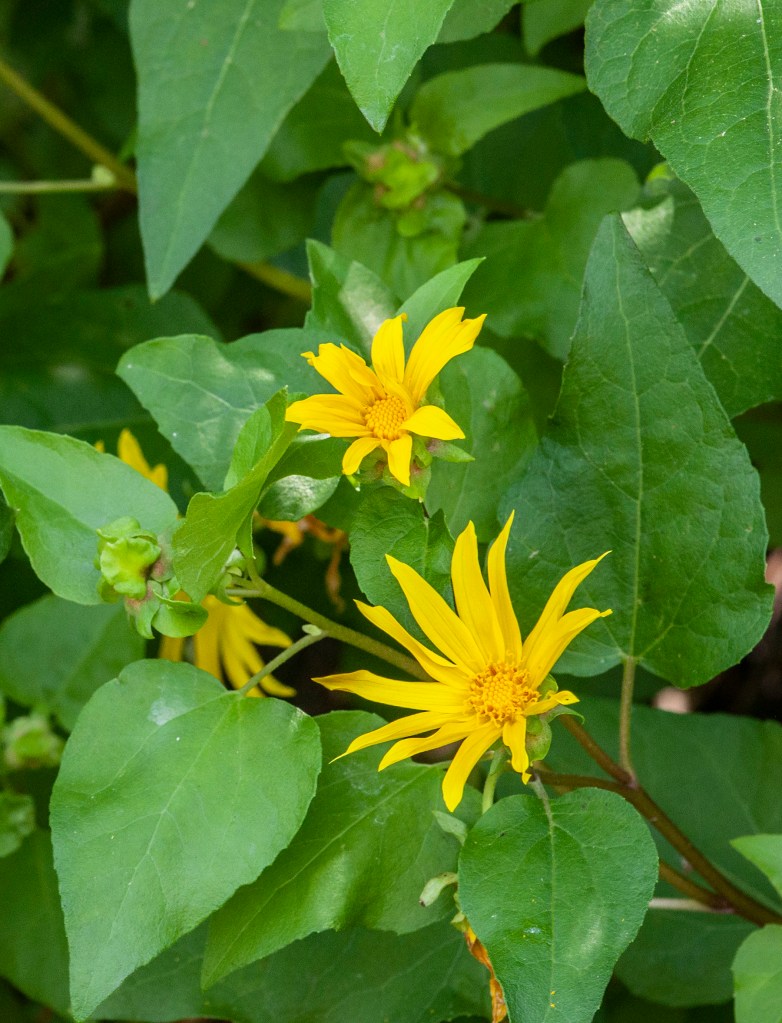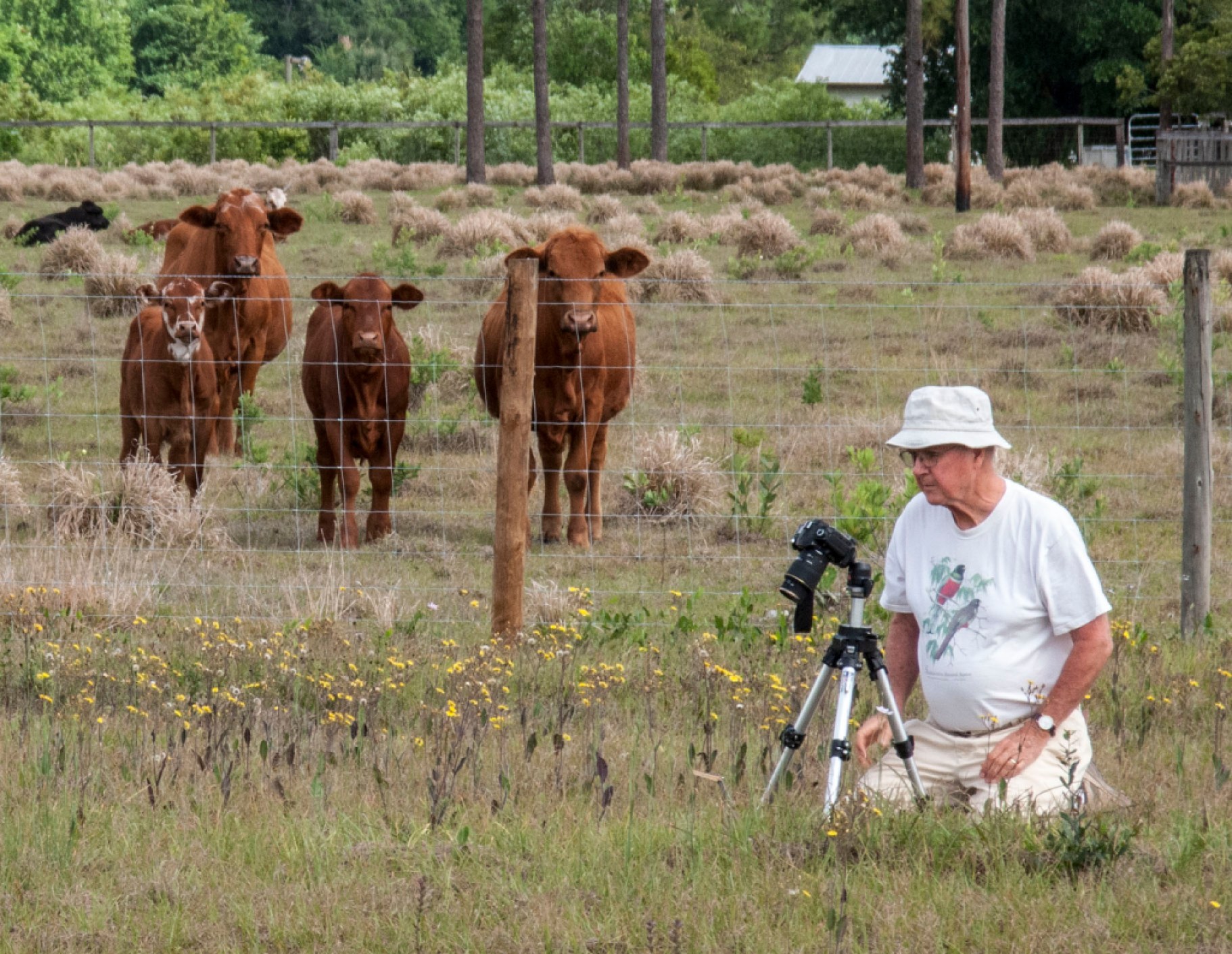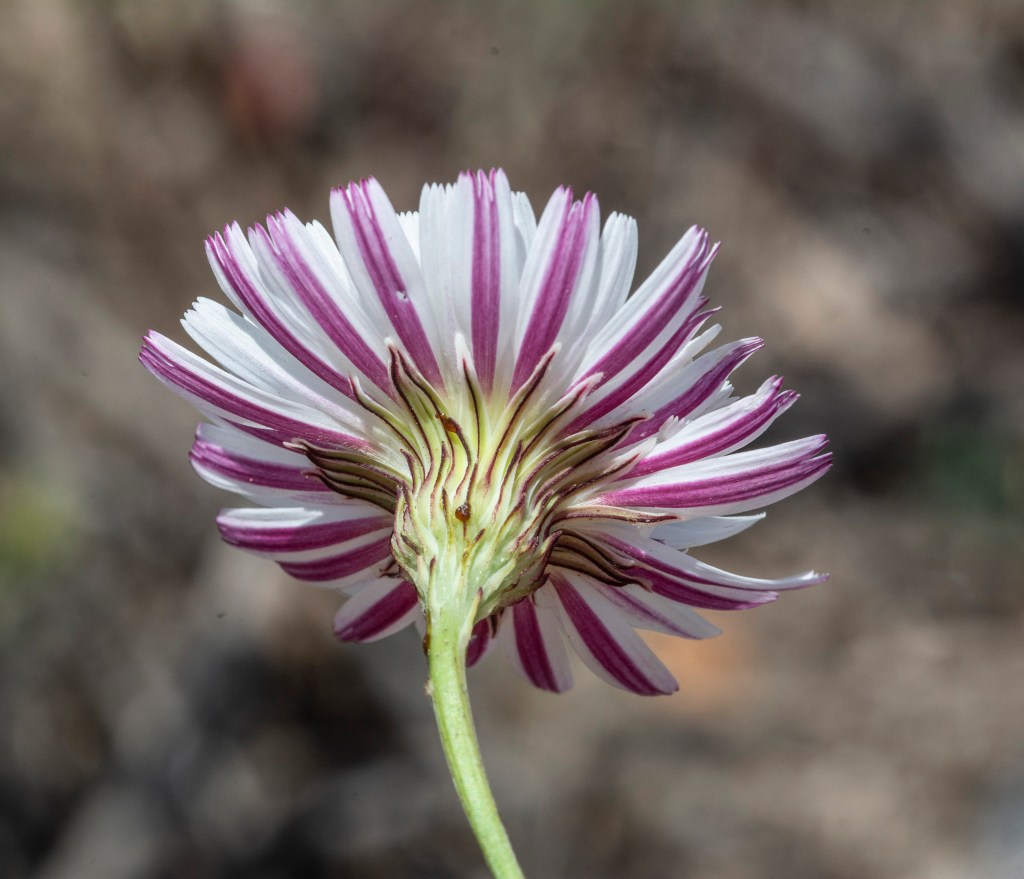Seriously Seeking Sunflowers
Richard Spellenberg and Naida Zucker Publish Exhaustive Ode to Asteraceae

For such a cheery-looking, smile-invoking plant, the sunflower is a rather complex, even confusing slice of nature. For starters, it’s not really a flower but instead many thousands of flowers in one — the center holds the bulk of these florets, but each yellow petal is its own flower as well.
Things only grow more complicated as you step back and look at the entire sunflower family, which is known by multiple names. Historically, Compositae referred to the composite nature of the flowers, but today Asteraceae is the scientifically preferred name. Yet amateurs frequently refer to the family as the DYCs, for Darned Yellow Composites. That’s because there are so many, their composite structure can be tough to identify, and so many species look alike.
Coming to our rescue is Richard Spellenberg and Naida Zucker, the New Mexico–based, husband-and-wife authors of The Sunflower Family: A Guide to Family Asteraceae in the Contiguous United States. I’ve known the authors for a few years because they are cousins of my wife, but only last year while visiting them in Las Cruces did I fully grasp how respected these retired New Mexico State biologists are on the world’s botanical stage.
Almost a decade in the making, The Sunflower Family is the most exhaustive look at the plant family ever published for the non-professional, entirely written and almost entirely photographed by the authors. I asked them a few questions about their latest book, which can be purchased at shop.brit.org.
What does this book try to do? For the first time, it attempts to make the family accessible to the amateur. It does this by its organization, reduction of technical terminology, thorough inclusion of all genera north of the Mexican border, and reliance on photographs that illustrate the distinguishing features by which genera are recognized. For example, included are photographs that show the underside of the flower head, which has important diagnostic characteristics.
The book is based on up-to-date knowledge that is reflected in classification. The information is useful for the amateur as well as the professional. As one’s confidence in working with the Asteraceae grows, the book becomes more and more useful.
Is this the first time a comprehensive book about the sunflower family has been published? Yes. It was the advent of the 30-plus volume technical, Flora of North America (FNA), and particularly the three volumes on the Asteraceae that were published in 2006, that made the project possible. The digital camera reduced cost and processing time. Huge online databases representing specimens filed in hundreds of university and standalone plant museums helped immeasurably in locating species in the field.
How long did you spend on the book? The project haltingly began in the summer of 2009. We felt twice, early on, that it was not feasible when a couple of species rare in the U.S. could not be found. Each was found on a second try in another year, and the project picked up.
We estimate we traveled 200,000 miles obtaining photographs. All but about 15 are by us. Tens of thousands of photos were culled to the 1,750-plus in the book. We probably took three long trips per year, and up to 10 short ones. We are fortunate to be in an area of high diversity of Asteraceae (the Southwest), and central to two other areas of high Asteraceae diversity, the Southeast and California.

What are some little-known facts about sunflowers? It is probably the largest plant family, estimated 23,000 to 33,000 species in an estimated 1,500 to 1,900 genera worldwide. Of these, in North America north of Mexico there are 428 genera and more than 2,400 species. California is incredible; it has more than half the genera (230) and almost half the species (nearly 1,100). This speaks to the uniqueness of the temperate California climate, with mild wet winters and hot dry summers, and the state’s latitudinal stretch and topographical diversity.
What are some of the most extreme members of the family? California may be the home of the smallest of Asteraceae in the world. They are plants that appear on bare, moist ground in chaparral, both in the Cudweed group. One, Ancistrocarphus keilii (Santa Ynez Bedstraw), was published as new in 2004 after being discovered by a professor at Cal Poly. It is rare, occurring only in a small area in the Santa Ynez Valley. The other, Hesperevax acaulis (Stemless Dwarf Cudweed), occurs more widely in the state. Both may be as small as 1/8″ tall.
In tropical Africa and tropical Asia, some Asteraceae are large trees to 100 feet tall! Hawaiian Silverswords are related to the California tarweeds and are capable of hybridizing with some of them. The silverswords have developed the habit similar to a yucca plant.
The Asteraceae have a unique mechanism by which the expanding female part of the flower pushes the pollen into the external environment, usually without resulting in self-pollination.

Are many species edible or otherwise useful to humans? For such a large family, the Asteraceae has much less use as compared to the bean family (Fabaceae) or the grass family (Poaceae), and several other families that provide vegetables.
In the food category are artichokes, lettuce, endive, and salsify. Spices and sweeteners include tarragon, stevia, and inulin. There are sources of oils and seeds, such as saffron, sunflower, and Niger seed. Beverages can be made from chamomile. Also useful are ornamentals such as marigold, sunflower, daisies, gazanias, chrysanthemum, zinnia, gerbera daisy, and dozens more. Insecticides can be made from pyrethrin, while herbal medicine uses echinacea, chamomile, absinth, and thoroughwort.
Did you discover any new species while researching this book? Yes, but not in the Asteraceae, and not in the U.S. A trip to the Sierra Madre Occidental in western Chihuahua revealed a previously unknown Astragalus (known as milk vetch or locoweed, in the bean family, Fabaceae) in 2014. I was not specifically searching for any particular Asteraceae but was photographing Asteraceae that might improve on photos of species occurring on both sides of the border. I happened upon this Astragalus, a genus that I specialize in.
Are any species named after you? Yes, nine. Two in the U.S. and seven in Mexico. One in the U.S. was a small Asteraceae on white rocky ground in northeastern New Mexico, Packera spellenbergii.
Why did you take on such a challenge? Both of us are teachers, and this very large, important, and often showy family of plants is not easily accessible to the amateur. Wildflower books abound, but none can fully treat the Asteraceae. The project seemed valid in this regard alone, and also something to productively fill retirement time — metaphorically, this was our boat — and a chance to see this great country.




You must be logged in to post a comment.